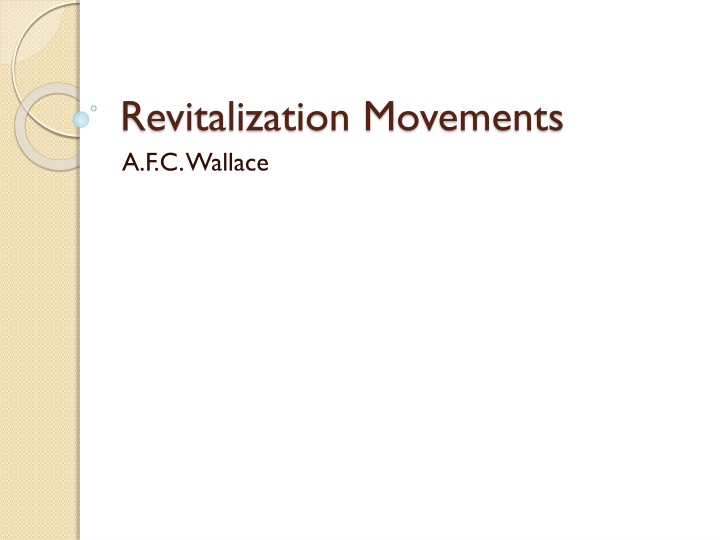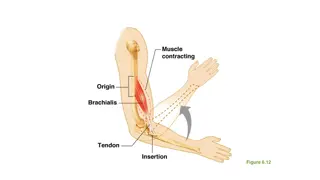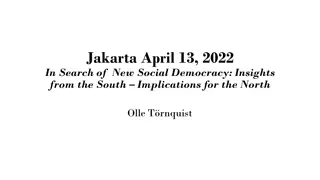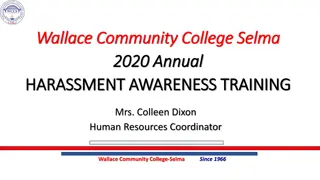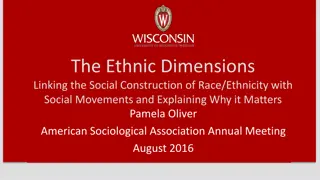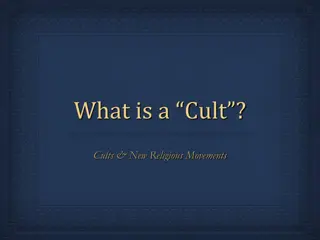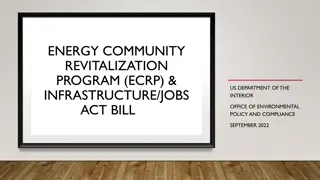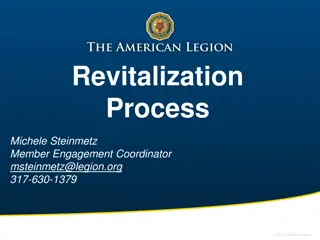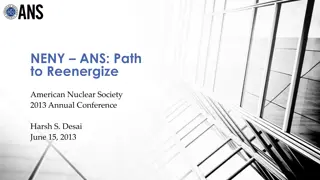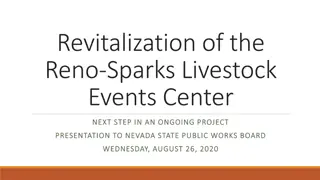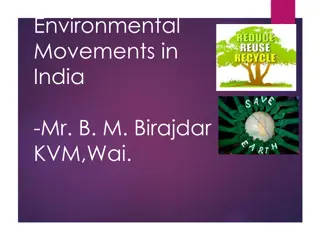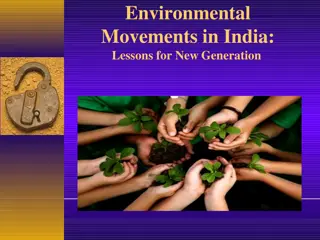Revitalization Movements by A.F.C. Wallace
Explore the concept of revitalization movements as explained by A.F.C. Wallace in his paper published in 1956. The theory delves into deliberate efforts by groups to create new cultures, drawing examples from historical and contemporary contexts. Discover the various theories surrounding revitalization movements and their role as societal responses to stress and dissatisfaction.
Download Presentation

Please find below an Image/Link to download the presentation.
The content on the website is provided AS IS for your information and personal use only. It may not be sold, licensed, or shared on other websites without obtaining consent from the author.If you encounter any issues during the download, it is possible that the publisher has removed the file from their server.
You are allowed to download the files provided on this website for personal or commercial use, subject to the condition that they are used lawfully. All files are the property of their respective owners.
The content on the website is provided AS IS for your information and personal use only. It may not be sold, licensed, or shared on other websites without obtaining consent from the author.
E N D
Presentation Transcript
Revitalization Movements A.F.C. Wallace
Background In 1956, Anthony F. C. Wallace published a paper called "Revitalization Movements" to describe how cultures change themselves. A revitalization movement is a "deliberate, organized, conscious effort by members of a group to create a new culture," and Wallace describes at length the processes by which a revitalization movement takes place.[1] Wallace derived his theory from studies of so- called primitive peoples (preliterate and homogeneous), Wallace believed that his revitalization model applies to movements as broad and complex as the rise of Christianity, Islam, Buddhism, or Wesleyan Methodism.
Theory of Revitalization Movements Many types of movement, like people movements, revival movements, cargo cult, social movements, sect formation Described differently by different disciplines Wallace searched for a common theory Revitalization Movements Anthony F. C. Wallace American Anthropologist New Series, Vol. 58, No. 2 (Apr., 1956), pp. 264-281 (article consists of 18 pages) Published by: Blackwell Publishing on behalf of the American Anthropological Association
Movements as a Response to Social scientists generally agree that revitalization movements are societal responses to excessive stress. However, several mutually exclusive theories have been proposed to explain the generation of a revitalization movement: acculturation holds that conquest and other forms of hegemony generate utopian movements; social evolution views revitalization movements as expressions of empowerment by disadvantaged classes or groups; and absolute deprivation posits that dissatisfaction with a low standard of living leads people to adopt a revolutionary ideology. The most widely accepted theory, relative deprivation, suggests that revitalization movements may occur when a significant proportion of a society finds its status and economic circumstances trailing those of the rest of society, even if the dissatisfied group has a relatively high standard of living according to independent economic measures or in comparison to its past standard of living.
Definition A deliberate, organised conscious effort to construct a more satisfying culture Must perceive their culture as a system Must see it as inadequate Must seek to innovate change Generally cultures drift, evolve, axculturate gradually Revitalization requires a rapid change, a rapid shift in Gestalt
1.Stress as Condition Cultures seek integration that gives meaning In emergency some members will seek to action to preserve the culture
Mazeways A mental image of society Revitalization changes the mazeways Discuss: What happens as churches become more traditional but the culture keeps changing? Revitalization is collective action to change the mazeways and the real systems
Ways of focusing on new mazeways Revivalistic: Going back to the old mazeways Millenarian: Going on to the new Millenum Cargo cults injecting new elements into the mazeways Messianic New saviour
Failed Revitalization Movements New denominations form after failure of revitalisation movments to transform an old denomination
PHASES OF a Revitalization Movement Steady State Individual Stress Cultural Disorientation Period of Revitalization Mazeway reformulation Communication Organisation Adaption Cultural Transformation Routinization New Steady State
Mazeway Reformulation The role of the Prophet Builds on existing cultural elements A moment of insight Preaching the Vision Organization of followers behind the prophet as he and they hear God
4.Adaptation Opposition Adapting the vision to interest groups Limiting the impact of opposition
5 Cultural Transformation As a significant sector of the population comes to accept the new vision Social revitalization occurs Cultural change Decrease in stress Successful social, economic and political reforms
6. Routinization Becomes ritualised in culture
